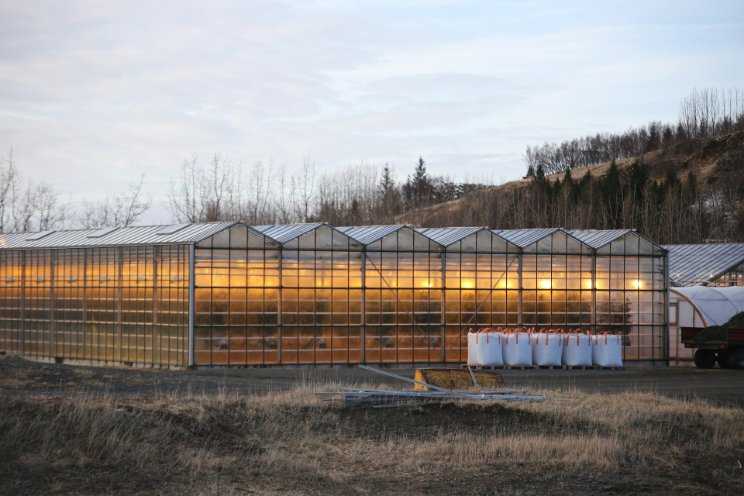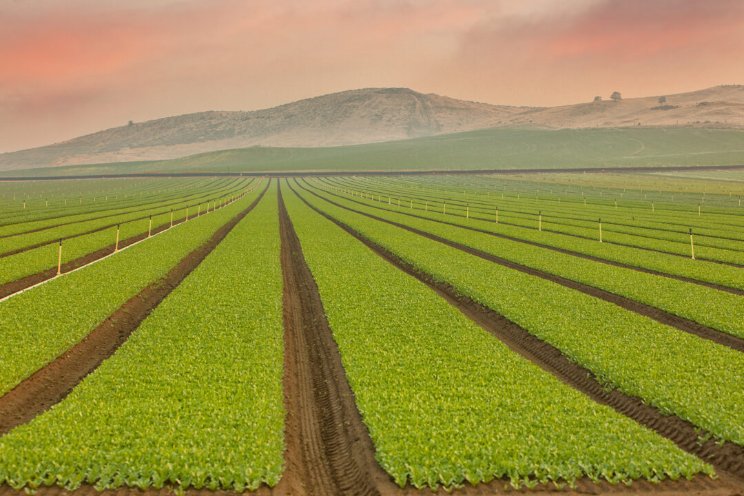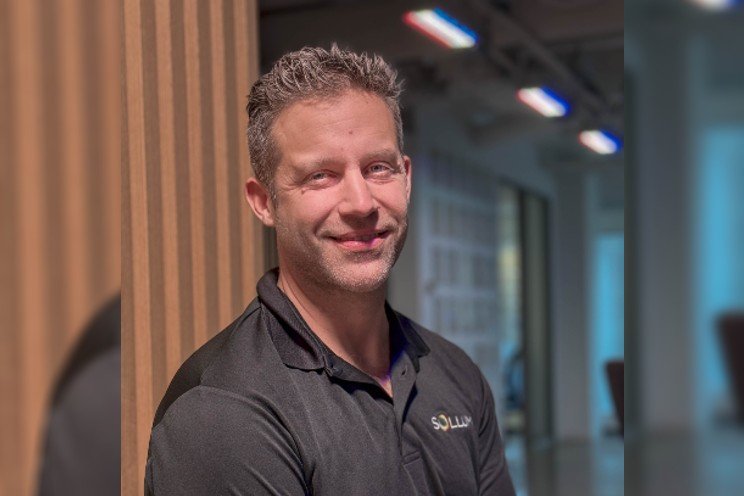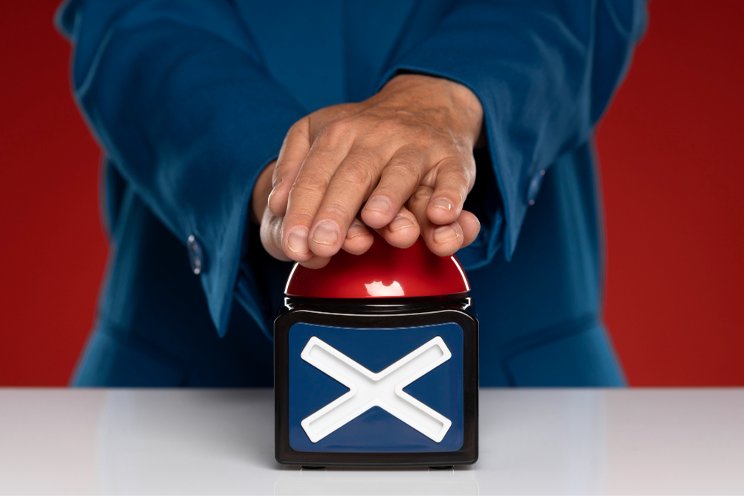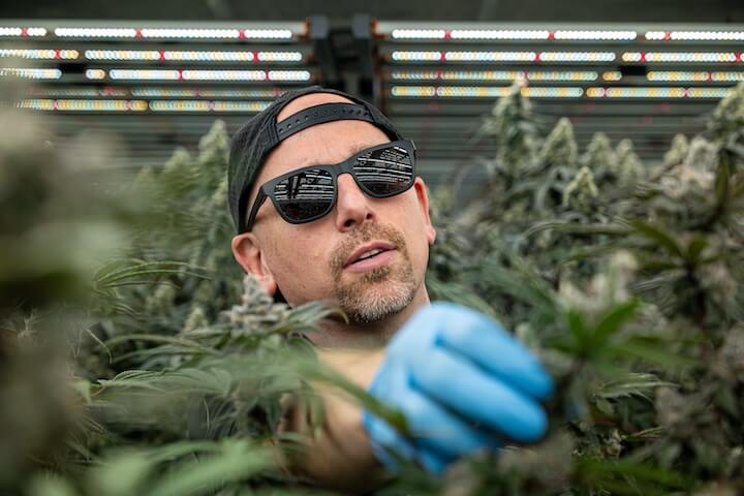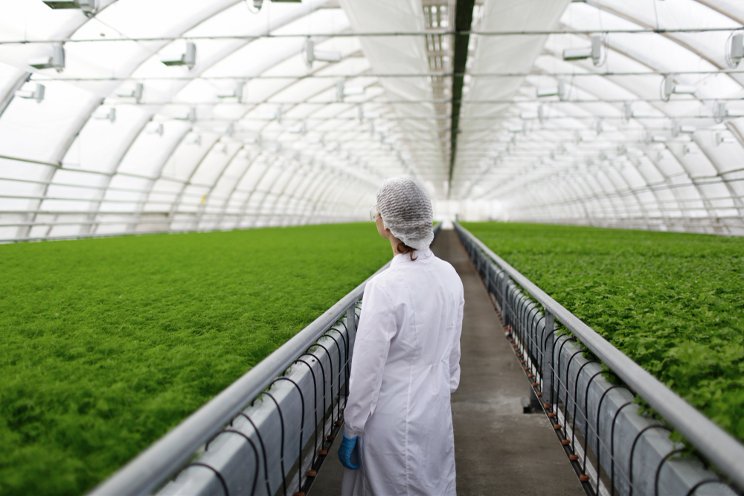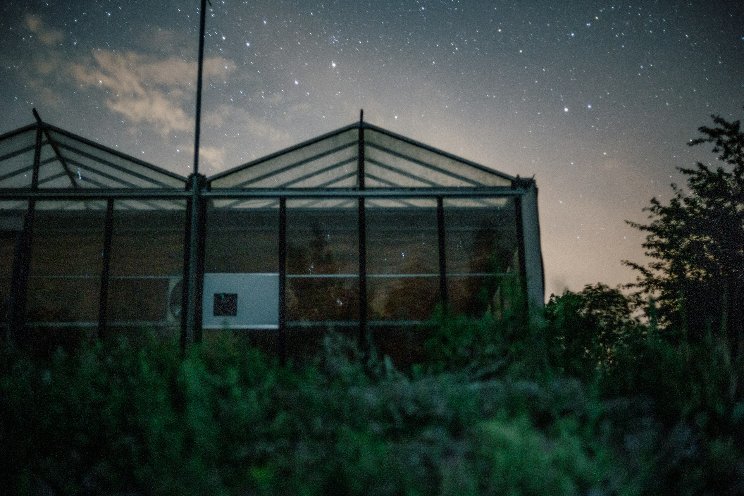Putting AI to work in commercial agriculture
Added on 24 January 2021
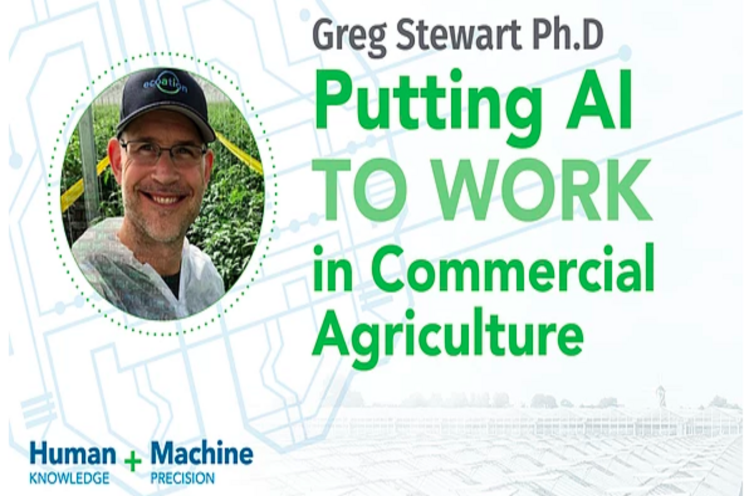
Watch the full 15-minute showcase presentation (1:07):
Why bring AI into agriculture?
A modern commercial greenhouse is a fantastically complex operation and can easily be dozens of acres in size. Growers are required to know what is going on in every corner of the greenhouse so they can coordinate the activities of potentially hundreds of people to ensure that production is maintained and issues are found & fixed before they become serious problems that threaten production or profitability.
At ecoation, we provide technology that can be mounted on carts in the greenhouse and can be used for scouting pests and diseases, monitoring crop work quality, and providing yield production assessments to decision-makers. We can either provide the cart equipped with hardware or the grower can easily retrofit an existing cart within the greenhouse. Depending on the sensory package selected, the hardware includes various cameras (including an 8k 360 camera), climate measurement sensors, and an interactive LCD to electronically record human observations and provide live alerts to scouts, bringing their attention to potential issues such as "you have entered an area of high risk for spider mites".
What do greenhouse AI solutions look like?
Monitoring Performance: Yield Production Assessment
In order to assess the production of the greenhouse and to find areas of lower than desired production, ecoation has implemented a system to count fruit (i.e. tomatoes) and classify by ripeness (color) for every row and post visited by the cart. The system uses a set of cameras to collect images as the cart moves down the rows which are then processed by a neural network-based model that detects and classifies according to color. The model was trained and validated on tens of thousands of images before its production release.
Managing Risk: Closed-Loop IPM
Monitoring and controlling pests and diseases with an integrated pest management (IPM) program is an essential component of any agricultural operation. If caught early enough, control options such as biologicals (good bugs that eat the bad bugs) may be sufficient to keep a pest population under control. If a pest population establishes itself too strongly, then the greenhouse may be required to progress to more disruptive measures such as chemical sprays. The goal of an IPM program is to ensure that the pest and disease pressure is maintained at a level lower than the economic injury threshold while minimizing the costs of control measures.
ecoation has created a pest and disease projection model that takes inputs from the human scout observations and the climate sensor measurements and forms a projection of the pest spatial distribution throughout the greenhouse of how they are expected to propagate into the future. These projections are provided in the form of a map where IPM managers and staff can visualize the hotspots and problem areas. The LCD tablet also provides scouts with real-time Live Alerts as they are entering a problem area so that they are reminded or notified what pests and disease are at a higher risk level and should be checked for closely.
Complete Operational Visibility: Climate to the Square Meter
Climate conditions - including temperature, light, humidity, CO2 - are well known to be critical elements to a crop's growth and productivity. What is generally less well known in commercial greenhouses, is how the climate varies throughout the greenhouse and what is the impact of localized microclimates within the facility. The ecoation OKO platform measures these 4 climate variables as it traverses the greenhouse. To use the sensor information to construct an estimate of the overall climate profile in the greenhouse, the data is processed to compensate for the daily variability and extract out the spatial variability that will permit growers to see their persistent microclimates. The grower has several actions available at this point - some will make physical changes to the air distribution systems (i.e. fans or misters) and others may choose to increase the biological treatments in the areas that have climates that are at risk for elevated pest growth.
Extending Grower's Influence: Crop Work Quality Check

Damaged crop: Broken head on a tomato plant.
Maintaining plants is an essential part of growing, and as such, high-quality crop work in a greenhouse setting is a crucial, yet potentially time-consuming, task. Tomato plants are an excellent example of this point, as they are indeterminants, meaning they continue to grow in height throughout the season. In order to keep the tops of the plants at the same height, the plants are lowered each week and the lower sections are de-leafed to permit the plant to focus its energy on fruit production. If this is not carefully executed, the head of the plant may get broken, damaging yield production and costing the grower money. ecoation's cameras capture images and use neural network models that have been trained to recognize and count individual stems within the crop. The system can then alert the grower of any gaps or nonuniform densities that may indicate a potential for lost production.
Putting it all together:
The overarching goal in collecting and analyzing all of this data is to be able to provide growers with an indication of where issues may be and what may be causing them. A 50-acre greenhouse is a huge inspection effort, but this is greatly simplified and focussed by the ecoation system that provides the top 5 or 10 areas that need expert attention and also indicates whether the root cause of the problem is likely to be related to climate, crop work, pests or diseases. This advanced level of analytical insight is made possible by ecoation's newly patented KENNIS Grower Assistant. KENNIS combines the vast amount of sensory data collected by OKO products and utilizes machine learning and AI / IA technology to provide an accurate stereo-spatiotemporal understanding of not only what is happening at every cubic meter of the greenhouse, but why it is happening while offering suggestions on what to do next.
By Greg Stewart, VP of Data Science
Click here for more information.
Image Courtesy of Ecoation
Source: Ecoation
More news



